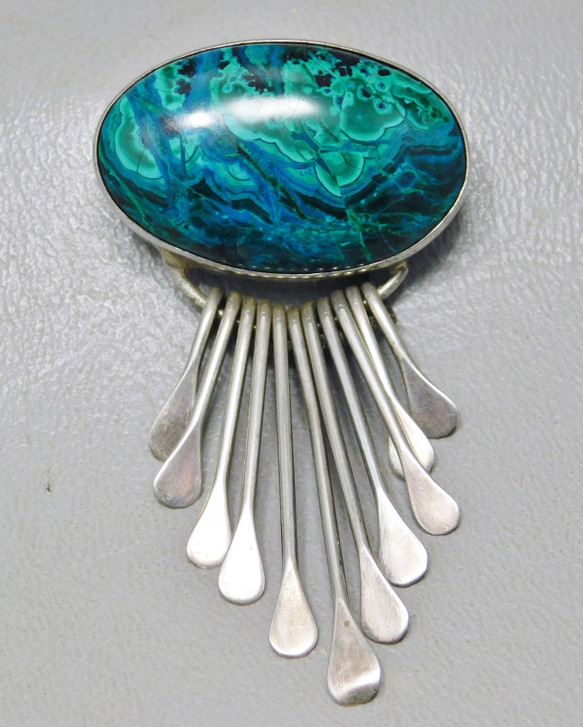Guide to Metals Used in Designer Jewelry Making - Part 2 - Silver
After gold, silver is the most malleable and pliant metal, but the major drawback of Silver is it does tend to tarnish.
The History of Silver:
Like gold, silver has an important role in our history. Silver too, is most commonly used for adornment or jewelry making.
Silver was extremely popular with ancient civilizations and it is frequently mentioned in records of Egyptians, Assyrians, Greeks and Romans. Silver objects dating from 4000 BC have been found in Greece and from slightly later in Anatolia (now Turkey). Silver artifacts have also been found in the Sumerian city of Kish dating from about 3000 BC.
Through the Middle Ages much of the available silver came from Bohemia, Spain, and Transylvania. It wasn’t until the Spanish discoveries of massive silver deposits in the Americas early in the 16th century that silver became highly sought after. The conquest of Mexico, Bolivia, and Peru opened up large ore mines that supply the world with silver until the 1800’s. Silver mining in the United States began on a major scale with the discovery of the Comstock Lode in Nevada in 1858. Silver has been discovered in several states, usually as a by-product of mining for other ores, such as zinc, lead or copper. In 2015 Alaska was the country's leading silver-producing state, followed by Nevada and Idaho.
Currently the top producers of silver are Mexico, Peru, China, Poland, Chile, Russia, Bolivia, Australia, Argentina, and the U.S. It is interesting to note that the latest release by the USGS shows silver production in the U.S. is now the lowest in more than 70 years. Unfortunately it is becoming harder to make silver mining economical. This is primarily due to environmental and government regulations.
Silver as Currency:
As early as 700 B.C., early Mediterranean civilizations were using the brilliant white metal as currency. The Coinage Act of 1792 established the first U.S. mint (in Philadelphia) and established that the silver dollar would be the unit of money in the U.S. Following the Act we had a series of Silver coins: the silver dollar, half dollar, quarter, dime and the half-dime. The Coinage Act of 1873 demonetized silver, but from 1878 to 1965 various silver coins were produced. The Coinage Act of 1965 completely eliminated silver from the quarters and dimes and reduced the amount from 90% to 40% in the half dollars.
Legends and Lore of Silver:
Just like gold, here are stories about lost silver mines too. The most famous probably being the Swift Mine in the Appalachian Mountains. In folklore, a silver bullet is the only weapon that can kill a werewolf. Silver is mentioned many times in the Bible, mostly in reference to currency or vessels to hold liquids.
Digging for Silver:
From 50- 80% of silver recovered is as a byproduct for other ores or minerals. Silver is rarely found in its native state. Since it is usually mixed with rock or other ores it must be recovered with smelting or leaching. The most common method to extract silver is in underground mining.
Silver use in Jewelry:
The techniques of working with silver, gold and other precious metals is very similar
Annealing heats the metal for altering. Engraving cuts shallow designs into the metal. Planishing is flattening the metal using a smooth-faced hammer or between rollers. Polishing uses abrasive compounds to make the surface smooth and shiny. Raising is the process of shaping a hallow form in the metal. Repousse or repoussage is imprinting a design in the metal from the back. Chasing is placing indentations or a design from the front of object. Sinking is hammering the metal to create a concave hemispherical shape. Soldering is used to connect metals with a low temp heat and solder.
The Purity of Silver:
Like gold, silver is soft and malleable, so it too is commonly alloyed with other metals, usually copper to make it stronger and more durable.
Most silver used in jewelry is Sterling Silver.
Sterling Silver is 92.5% pure silver and expressed or stamped as 925.
Other types of Silver:
Silver Plated is when a very thin layer of silver is applied to a base metal. Silver Plated Jewelry is usually referred to as Costume Jewelry. It is inexpensive, but it generally doesn’t last long.
Silver Filled has a thicker layer of silver, but it is rare, because silver itself is not that high priced.
Tibetan Silver, Bali Silver, Tribal Silver, Thai Silver, and Mexican Silver are some names given to silver that do not necessary have any silver at all. True Sterling Silver should always carry the 925 stamp. But be wary of buying silver from non-reputable sources.
Argentium Sterling is a brand patented and trademarked by Argentium Silver Company, UK and is modern tarnish-resistant silver alloy, containing either 93.5% or 96% silver, nut it replaces the copper in a traditional sterling silver alloy with some of the metalloid germanium.
Britannia Silver was developed in 1697 as a way to prevent British sterling coins from being melted to create silver plate. Britannia silver is composed of at least 95.84% pure silver. The other 4.16% of its composition is made of copper and other metals. Britannia silver is also more expensive and less robust than sterling silver. Britannia Silver items are stamped 958.
See our first installment in this series:
Guide to metals used in jewelry - Gold
Coming next month-Guide to Metals Used in Jewelry, Part 3 Platinum
 US Dollar
US Dollar
 Australian Dollar
Australian Dollar
 Euro
Euro
 Canadian Dollar
Canadian Dollar
 British Pound Sterling
British Pound Sterling

